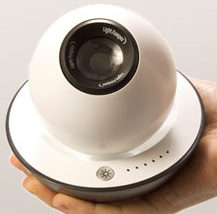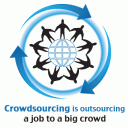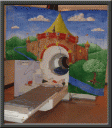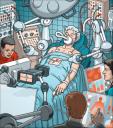Designed to Put You To Sleep
Tuesday, November 17th, 2009 One of the challenges we look at in my cognitive design class is how to use the latest neuroscience to do a “cognitive makeover” of a room to support specific types of sleep – short but restorative cat naps, a full night’s rest, stimulate lucid dreaming and so on.
One of the challenges we look at in my cognitive design class is how to use the latest neuroscience to do a “cognitive makeover” of a room to support specific types of sleep – short but restorative cat naps, a full night’s rest, stimulate lucid dreaming and so on.
So I am always on the lookout for new designable scientific insights into sleep and various gadgets that help. A former student just sent me this link on Lightsleeper. Here is how it works:
“When you turn on the device (and turn off the lights in your bedroom) LightSleeper projects a light on the ceiling above your bed. The light moves in a controlled, circular, and soothing manner. Follow the light with your eyes, while lying in bed. Gradually, your mind will relax and you’ll be ready to sleep well and enjoy a longer, better quality sleep.”
It is like reading only it does not stimulate the mind. The device shuts off after 30 minutes.









